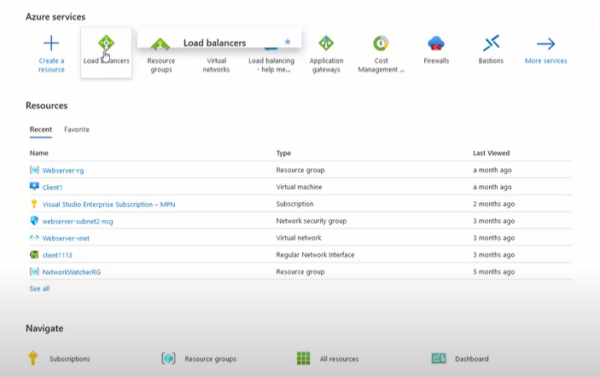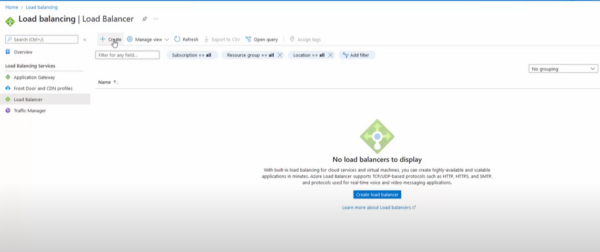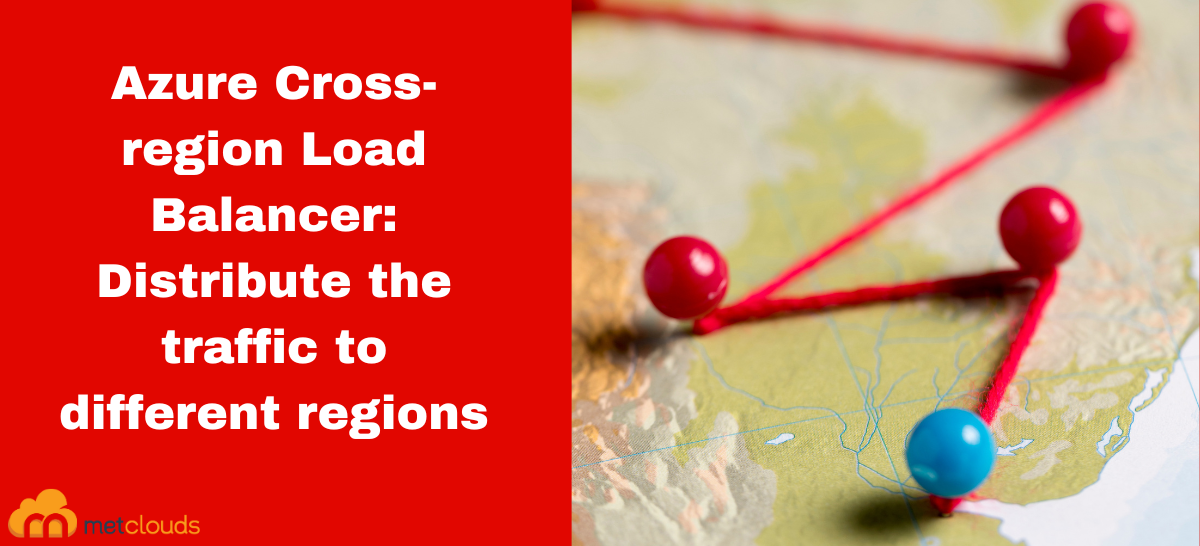The Azure Cross-region (Global) Load Balancer is a service offered by Microsoft Azure that enables you to distribute traffic across multiple regions to provide high availability and improve application performance. It doesn’t work within the region, and it is across the regional load balancers, providing a single global front-end to the clients and root packets using the Microsoft backbone network rather than the internet.
Features and Benefits of Azure Cross-region Load Balancer
- Global traffic routing: The Cross-region Load Balancer allows you to route incoming traffic to different regions or data centers based on various criteria such as geographic location, performance, or specific routing rules.
- High availability: By distributing traffic across multiple regions, the load balancer helps ensure that applications remain available even if one or more regions or data centers experience an outage.
- Improved performance: With the global load balancer, you can direct traffic to the closest or best-performing region based on latency measurements or endpoint health, leading to faster response times and improved user experience.
- Geographic distribution: This load-balancing solution enables you to provide services to customers in different regions by routing them to the nearest, reducing latency, and optimizing global service delivery.
- Load balancing algorithms: Azure Cross-region Load Balancer offers different load balancing algorithms, such as performance, weighted, or priority-based routing, allowing you to choose the most appropriate method for your application’s needs.
- Traffic failover: The load balancer automatically redirects traffic to maintain service availability if a region or endpoint becomes unavailable.
Integration with Azure services: The Cross-region Load Balancer can seamlessly integrate with other Azure services, such as Azure Traffic Manager, Front - Door, or Azure Application Gateway, to enhance application scalability and resilience.
How does Azure Cross-region Load Balancer Work?
You can load balance across two or more regions. And if any of them fails, it will carry on load-balancing traffic to the regions still up and running. After the failed region is back up and running, the load balancer will start load balance traffic back to it. There are services in each region and load balancers between them. Also, there are users from around the world who access these services. There are participating regions they are regions participate in advertising anycast IP address. The load balancer has a front-end IP address accessible to the users and the IP address of the cross-region load balancer, advertised by all participating regions. A participating region advertises the IP address.
The home region is the cross-regional load balancer, or the public IP address of the global tier is deployed. And if it fails, it does not impact anything of routes or traffic. It impacts the management side, and you will lose management access.
There is a backend pool made up of regional load balancers. The health probe is non-configurable and automates and checks the health of the regions every twenty seconds. The pass-through load balancer preserves the client’s IP address.
Demo of Azure Cross-region Load Balancer
To set up Azure Cross-region Load Balancer, configure endpoints in different regions, define load balancing rules, and specify routing methods based on your requirements. By leveraging this service, you can achieve global scalability and high availability of applications.
Step 1. Log in to the Azure portal and configure the load balancer.
Step 2. Click on Load balancers under Azure services.

Step 3. Click on Create load balancer.
Step 4. Click on Create from the upper row.

Step 5. Fill in all the information required.
Step 6. Click on Next: Frontend IP configuration.
Step 7. Click on Add a frontend IP configuration.
Step 8. Click on Create new and add a public IP address.

Step 9. Give a Name and click the Add button.
Step 10. On the bottom, click on the Next: Backend pools button.
Step 11. Click on Add a backend pool. Then, specify the load balancers and verify the frontend IP configuration and the IP address.
Step 12. Click on the Add button.
Step 13. Click on Create a load balancer and go to Inbound rules.
Step 14. Now click on Add a load balancing rule, and enter the details in the box that appears. Then click on the Add button.
Step 15. Move to Outbound rules, click Add an Outbound rule, and configure it.
Conclusion
The Azure Cross-region Load Balancer, also known as the Global Load Balancer or Azure Traffic Manager, is a powerful service provided by Microsoft Azure. It allows users to distribute incoming traffic across multiple regions, providing high availability and improved performance for their applications.
Metclouds Technologies help you to improve application performance with Microsoft Azure.


